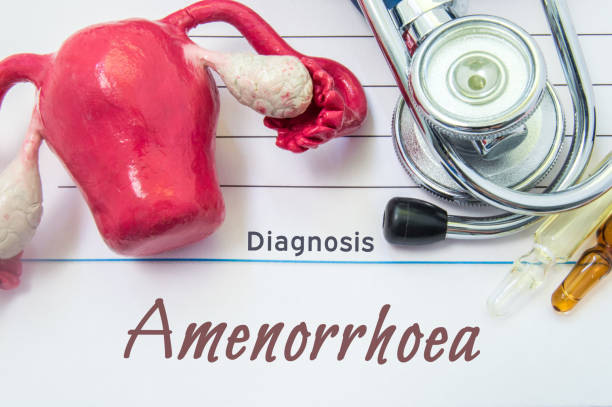Amenorrhoea is the absence of a menstrual period. This condition may occur naturally during pregnancy, breastfeeding, perimenopause or due to contraceptives, so it is not a disease. However, it can indicate an underlying condition, especially when there are other symptoms.
There are two types of amenorrhoea. If a female is older than 16 and has not gotten her first period, it is called primary amenorrhoea, but the absence of more than 3 consecutive menstrual periods in an adult woman is called secondary amenorrhoea.
Causes of Amenorrhoea
There are some natural reasons why you might miss one or more periods, including pregnancy, lactation, menopause, and surgery (to remove your ovaries or uterus). The other causes of amenorrhoea are grouped according to their types.
Causes of Primary Amenorrhoea
- Hormonal issues due to problems with the pituitary gland or brain.
- Genetic or chromosomal abnormalities that affect the reproductive system, such as Turner syndrome.
- Abnormal structural development, such as missing parts of the vagina or uterus.
- Underdeveloped reproductive system.
Causes of Secondary Amenorrhoea
- Drastic change in weight.
- Certain birth control methods like IUDs.
- Malnutrition.
- Stress.
- Chemotherapy and radiation.
- Uterine surgery with scarring.
- Certain medications.
- Extreme exercise.
- Pituitary disorders.
- Ovarian tumours.
- Obesity.
- Primary ovarian insufficiency.
- Chronic illnesses.
- Hypothalamic amenorrhoea.
Symptoms
The major symptom of amenorrhoea is the lack of period, but you may also notice some of the following symptoms.
- Acne.
- Vaginal dryness.
- Hot flashes.
- Vision changes.
- Lactation.
- Headaches.
- Excessive facial hair growth.
- Changes in breast size.
Treatment
Amenorrhoea has numerous possible causes, so the treatment options vary based on the cause. The options include surgery, medications, and therapy.
Medications
- Estrogen replacement therapy is recommended for those with primary ovarian insufficiency.
- Hormonal birth control pills are given to restart an off-kilter menstrual cycle.
- Medications may also be prescribed to shrink tumours if necessary.
- Other drugs may be recommended depending on the underlying cause of a patient’s amenorrhoea.
Surgery
Surgery for amenorrhoea is not very common, but if medications don’t suit the condition, then surgery may be needed, and this includes:
- Surgery to remove pituitary tumours.
- Surgery to remove scar tissue from uterine scarring.
Therapy
If amenorrhoea is caused by some lifestyle factors, shifting to a healthier lifestyle can restore your menstrual cycle.
- For women who exercise extensively and lose weight drastically, such as dancers and athletes, doing the right amount of exercise can restore their cycles to normal.
- Those who are overweight, obese or underweight can focus on getting a healthy body mass index and restoring normal menstrual cycle through exercise and healthy dieting.
- Reducing stress and getting adequate sleep is also vital for treating amenorrhoea.



